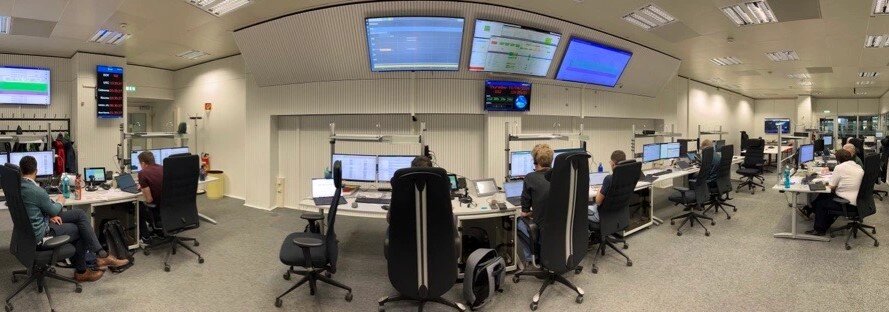11.03.2024
EarthCARE goes west for launch
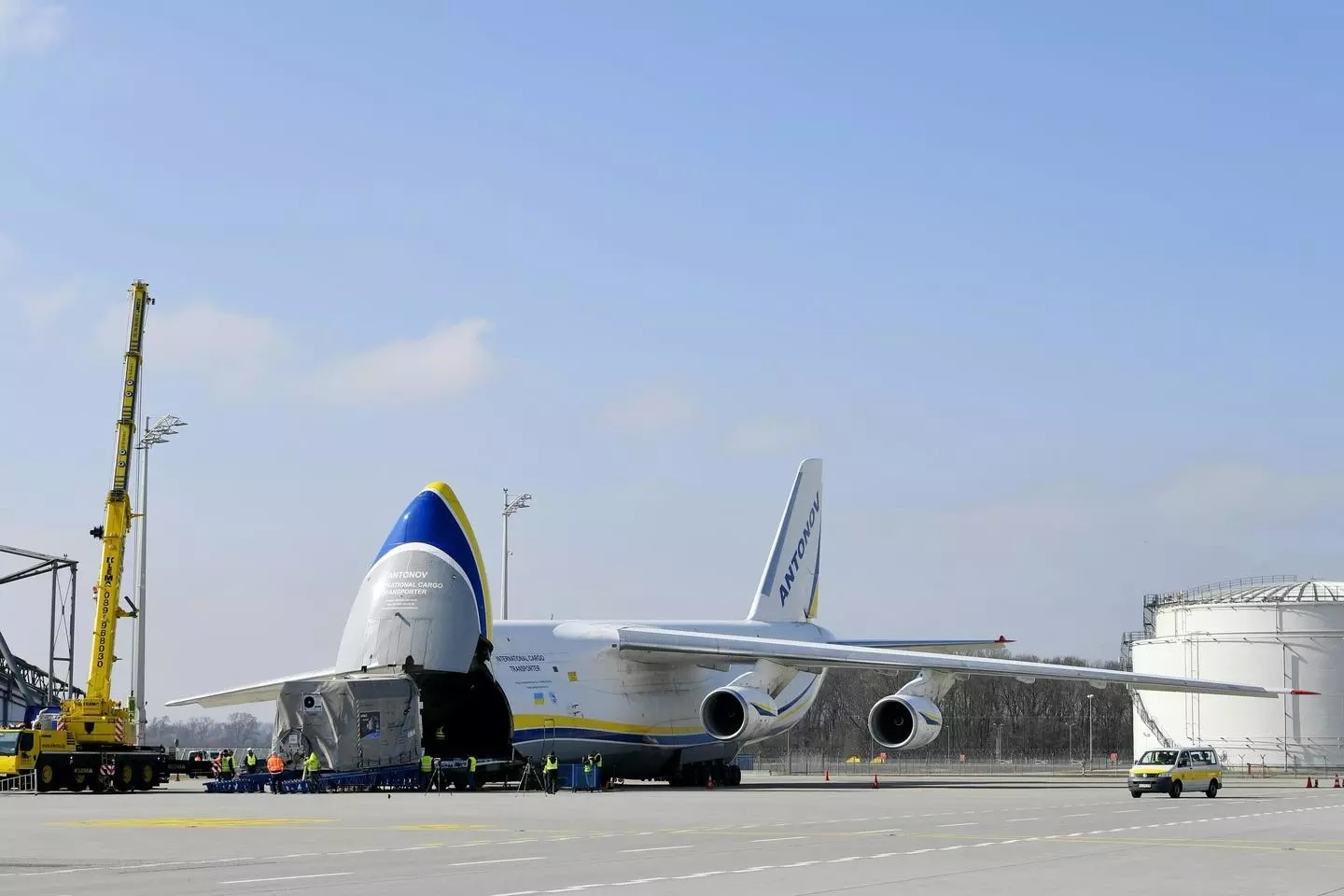
Munich, 09 March 2024 – The Airbus-built EarthCARE (Earth Clouds, Aerosols and Radiation Explorer) spacecraft has left Munich, Germany, and is now on its way aboard an aircraft to its launch site in Vandenberg, California. EarthCARE is planned to be launched in May on a Falcon 9 rocket.
EarthCARE is the most complex Earth Explorer mission in the European Space Agency’s (ESA) FutureEO programme. This new satellite mission will quantify and reduce the uncertainty about the role that clouds and aerosols (tiny atmospheric particles) play in heating and cooling Earth’s atmosphere, contributing to our better understanding of climate change. The spacecraft was developed, built and tested with the involvement of experts from 15 European countries as well as Japan and Canada.
Marc Steckling, Head of Earth Observation, Science and Exploration at Airbus said: “As the world’s climate continues to change at a faster and faster rate, scientists need ever more sophisticated space assets to enable better analysis. EarthCARE will help fill in the gaps by providing unprecedented measurements so that meteorologists and climatologists can better understand how energy is transmitted within the atmosphere.”
A joint undertaking between ESA and the Japanese Space Agency (JAXA), EarthCARE will examine the role clouds and aerosols play in reflecting solar radiation back into space and also in trapping infrared radiation emitted from the Earth’s surface.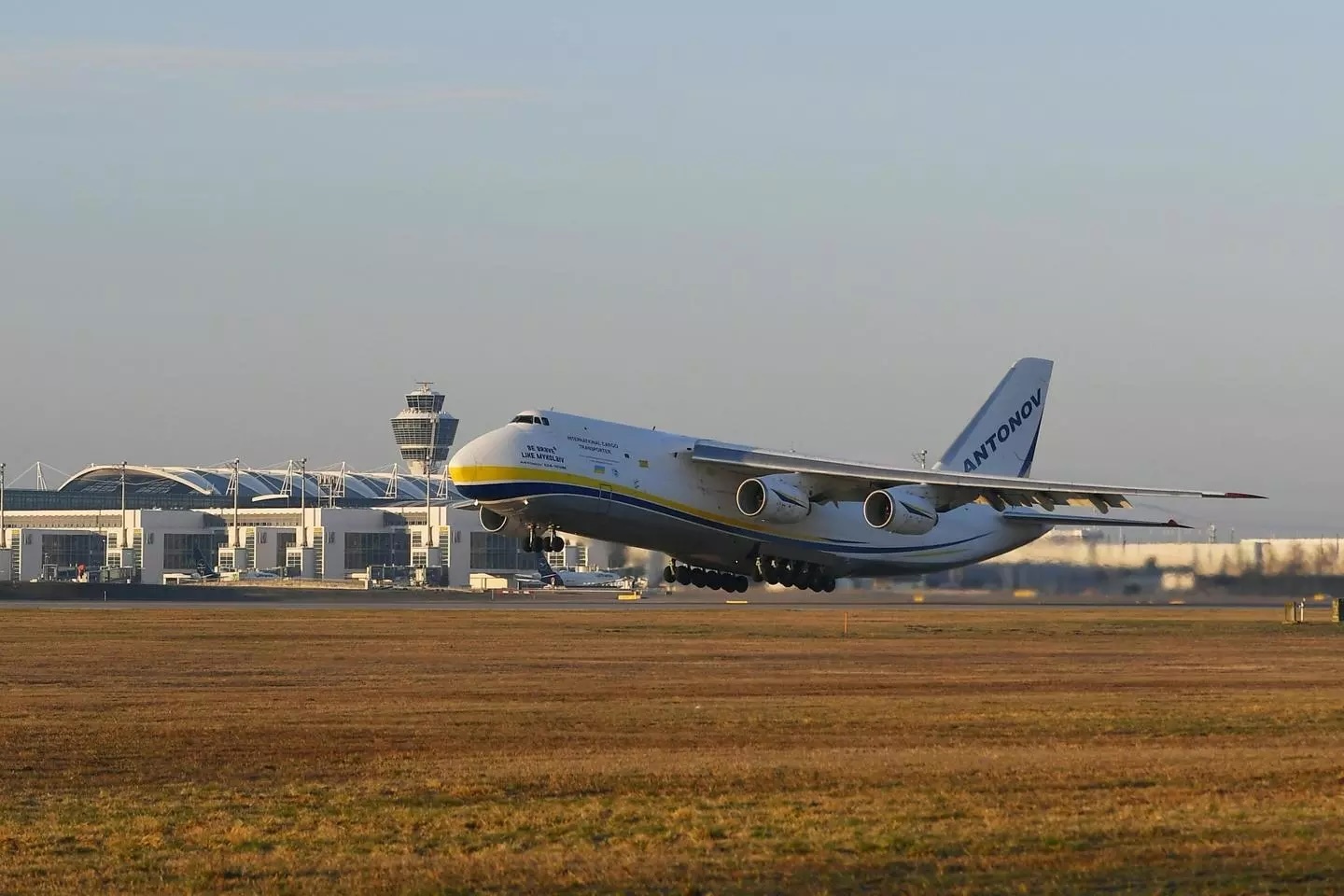
EarthCARE climate satellite has taken off from Munich, Germany to its launch site in California, USA - Copyright Flughafen München
EarthCARE will draw up vertical profiles of natural and human-made aerosols, register the distribution of water droplets and ice crystals and how they are transported in clouds, and provide essential input to improve the modelling of the warming climate and weather forecasting. Aerosols influence the life cycle of clouds, and so contribute indirectly to how they give off radiation – measuring them will give a better understanding of Earth’s energy budget.
EarthCARE is backed by more than 200 research institutes around the world. Scientists will be able to use the data to improve the accuracy of cloud development models, their behaviour, composition, and interaction with aerosols.
The atmospheric lidar ATLID is one of four instruments on the EarthCARE satellite providing vertical profiles of aerosols and thin clouds. ATLID is the second European spaceborne ultraviolet lidar after the wind sensing spacecraft Aeolus, making Airbus a worldwide specialist in spaceborne lidars. 
In addition to ATLID the satellite also includes a Broad-Band Radiometer developed by ESA through European industry, a Multi-Spectral Imager developed by Airbus subsidiary SSTL and a Cloud Profiling Radar developed by JAXA. This unique combination of instruments will allow scientists for the first time to directly assess the role of clouds and aerosols on Earth’s radiation budget with one integrated satellite system thereby reducing current uncertainties. EarthCARE will circle Earth in a Sun-synchronous 400 km polar orbit crossing the equator in the early afternoon to optimise daylight conditions.
Airbus Defence and Space in Friedrichshafen (Germany) is prime contractor to develop and build the 2 tonne satellite, with Airbus Defence and Space in Toulouse (France) supplying the Atmospheric Lidar ATLID.
Quelle: AIRBUS
----
Update: 16.04.2024
.
After being packed up in Germany, a long voyage to the US and then a month in storage, ESA’s EarthCARE satellite has been carefully lifted out of its transport container so that the team at the launch site can start getting it ready for its big day in May.
With the climate crisis increasingly tightening its grip, the Earth Cloud Aerosol and Radiation Explorer, or EarthCARE for short, carries a set of four state-of-the-art instruments that will work together to provide a holistic view of complex interplay between clouds, aerosols, incoming solar radiation and outgoing radiation to yield new insight into Earth’s radiation balance.
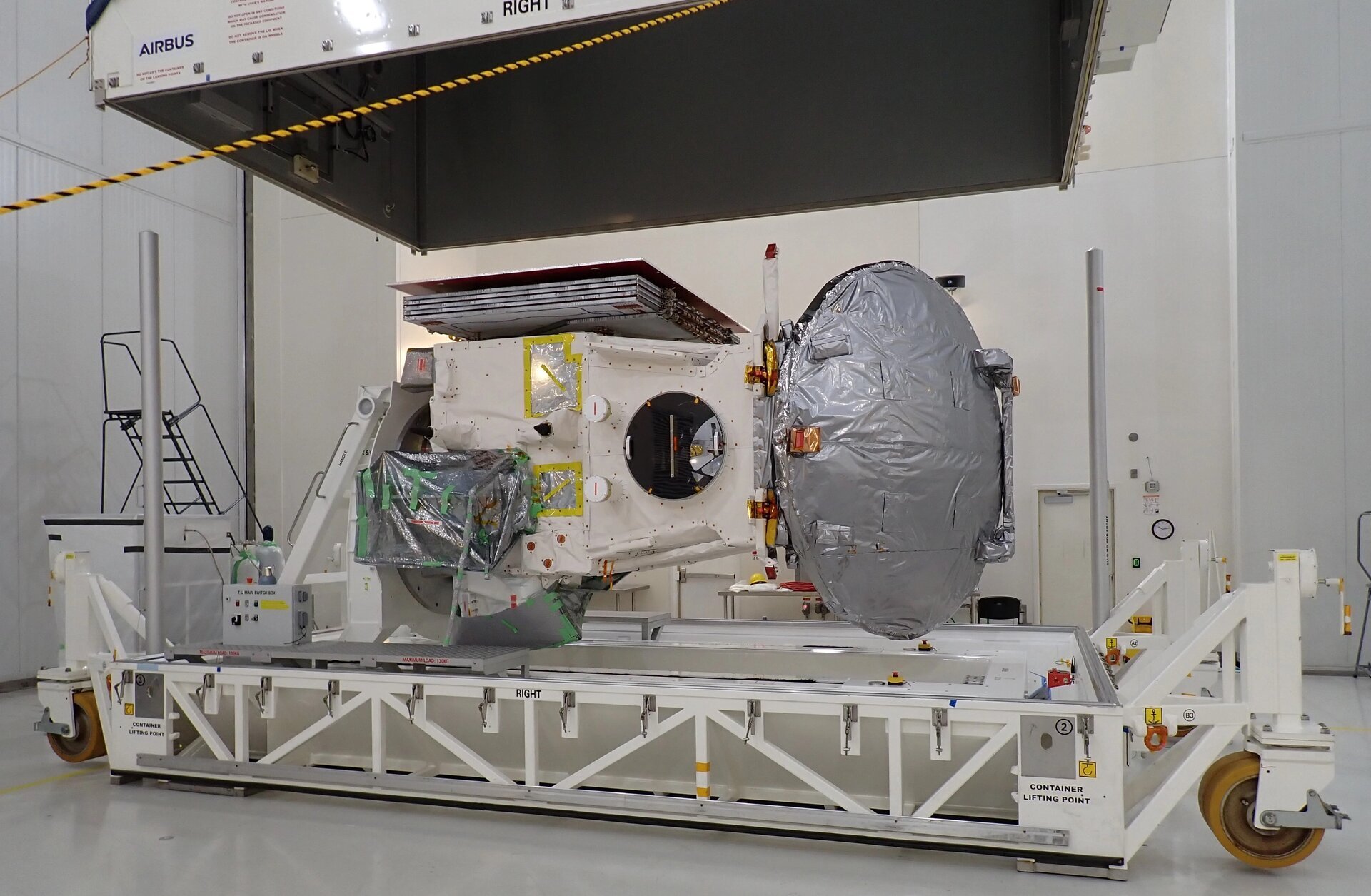
EarthCARE revealed
The EarthCARE satellite spent over a month cocooned in its transport container, during which the container’s temperature and pressure were monitored carefully throughout.
Importantly, the team also purged nitrogen from the container to keep the satellite’s instruments in perfect condition.
A NASA building near the Space X launch site in Vandenberg, California, was home for EarthCARE during the storage period. Then, a few days ago, the satellite container was taken by truck to a different facility, called the Astrotech building, where it was first left to acclimatise to its new surroundings.
But now, EarthCARE has now been carefully removed from the container, and the team has been reunited with their precious satellite.
ESA’s EarthCARE launch campaign manager, Bill Simpson, said, “EarthCARE’s journey to California and subsequent few weeks of storage all went really well, but we were anxious to actually lay eyes on the satellite again.
“So, when we were able to open the container and hoist EarthCARE out, we were all very excited. This hoisting manoeuvre is a very careful one – our satellite is over 2000 kg of very sensitive equipment.
“I’m extremely happy to report that EarthCARE looks fit and well, but we obviously have to run a series of tests to make absolutely sure that it survived the journey ok.”
One of the first tasks on the ‘launch campaign’ to-do list was to give the satellite some energy by charging up its batteries.
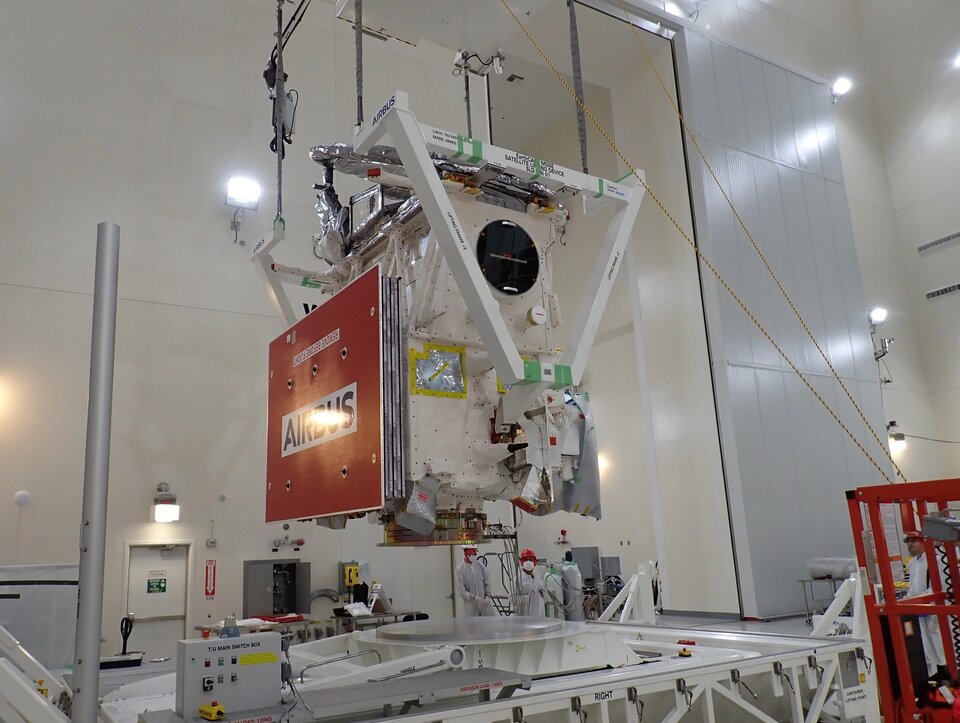
In parallel, the team at ESA’s Operations Centre in Germany is running a series of all-important simulations – these simulate what they will have to do during liftoff and the ‘early orbit’ phase of the mission.
ESA’s EarthCARE Project Manager, Dirk Bernaerts, noted, “This really does mark the start of the launch campaign – an important milestone that signals the start of an intense period that will last at least six weeks leading to liftoff.”
“The team has a lot of work to do, the satellite is not only big, but extremely complex so everything has to be carefully checked and prepared before it is encapsulated within its Falcon 9 rocket fairing prior to launch towards the end of May.
Follow the EarthCARE launch campaign blog for more updates.
Quelle: ESA
----
Update: 7.05.2024
.
Mission control ready for EarthCARE despite disruption
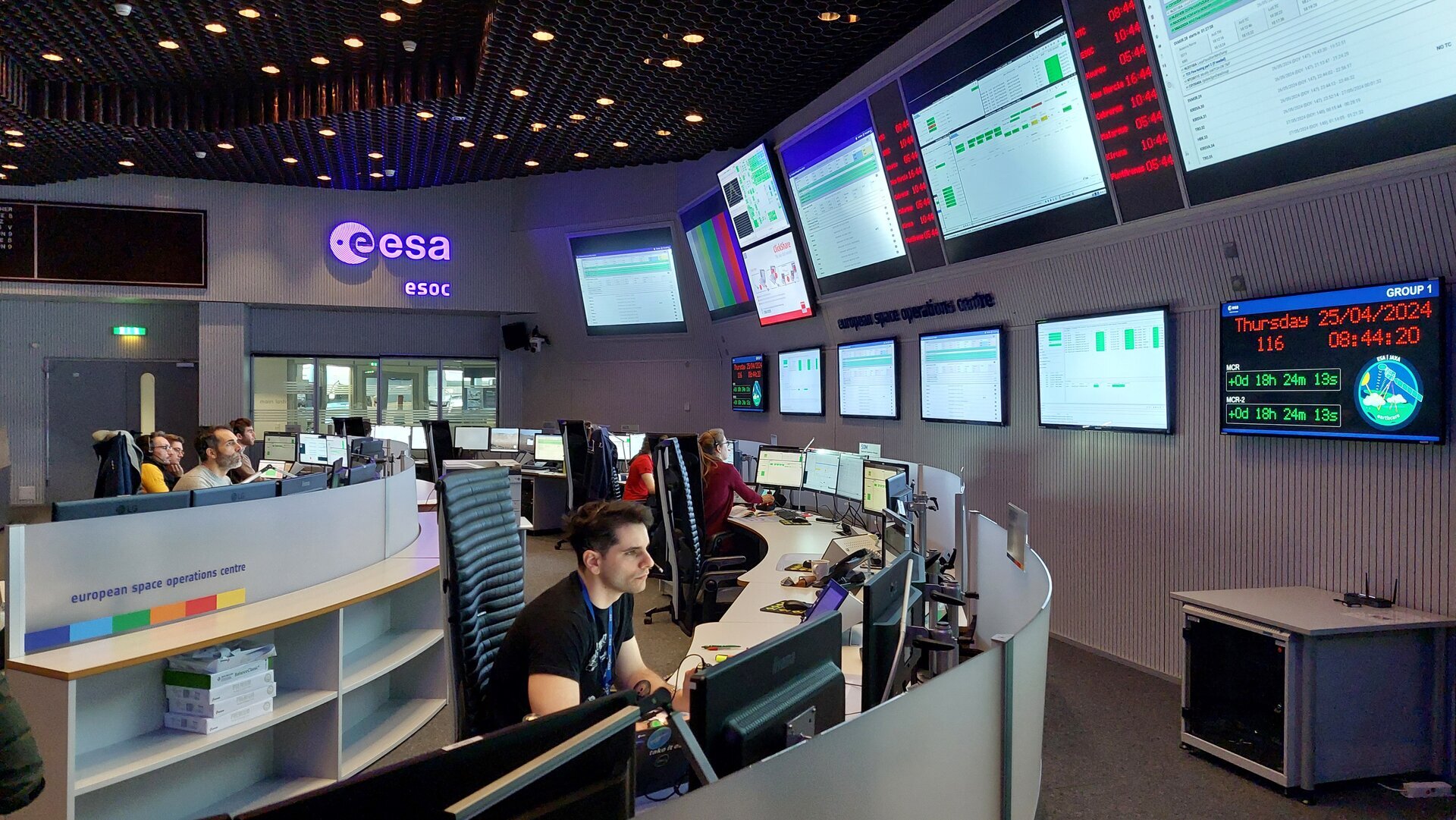
Teams at ESA’s European Space Operations Centre in Darmstadt, Germany, are currently engaged in intensive preparations for the critical ‘Launch and Early Orbit’ phase of the agency's EarthCARE satellite.
The core of any launch preparations at ESA is the ‘simulations campaign’. By rehearsing the time-critical operations that take place on and around launch day, the campaign trains the spacecraft’s flight control team together with support teams from flight dynamics, ground systems and software support as well as teams from the satellite’s manufacturer and instrument teams into a single cohesive unit.
Experienced Simulations Officers monitor the actions of the combined Mission Control Team and inject faults into the ground segment that force the team to react in real time: What should they do if a member of the control team suddenly falls ill? What if communication with the spacecraft is interrupted at a crucial moment? How should they react to an alert from ESA’s Space Debris Office warning of a possible collision in orbit?
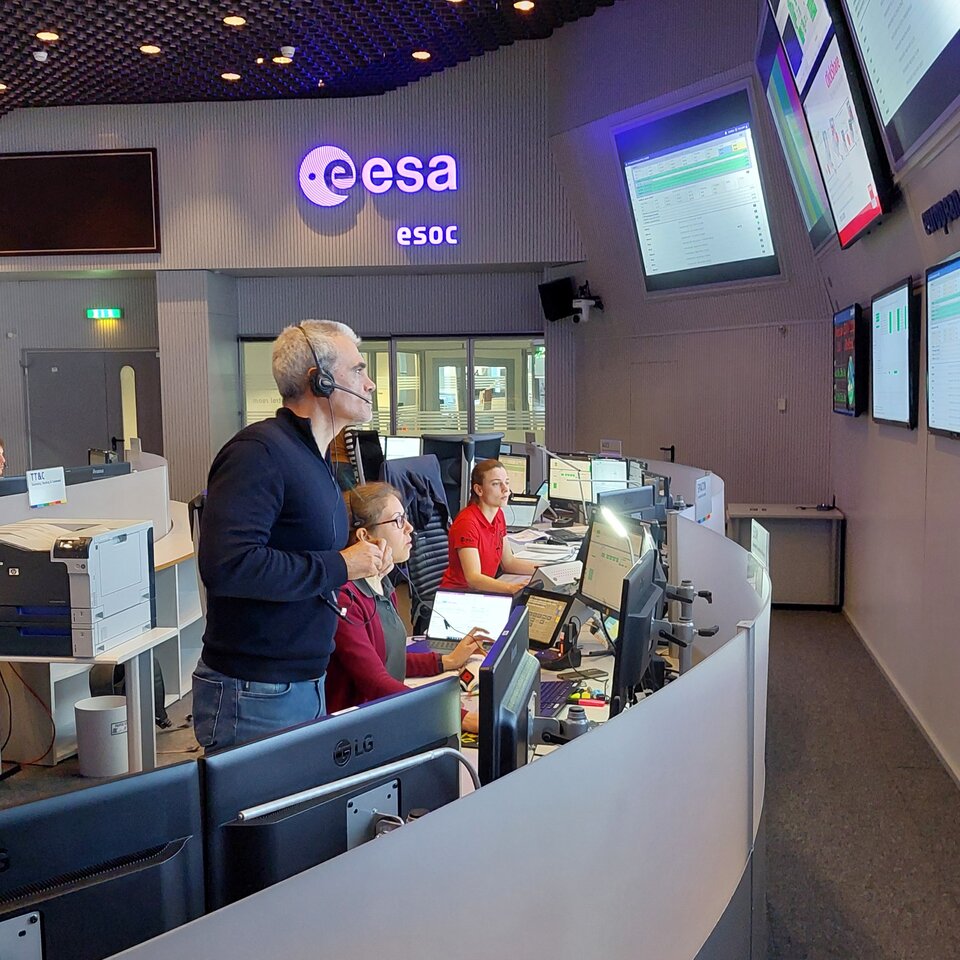
“Our Simulations Officers are very good at finding potential weak points,” says EarthCARE Flight Operations Director, José Morales. “This team is excellent, but young, for example. So, they were forced to handle an issue while their experienced team leader was kept out of the action. What they face during the simulation campaign will likely be far worse than anything they encounter on launch day. But in spacecraft operations, we hope for the best and plan for the worst.”
Effective communication is essential on launch day. The ESA teams must work seamlessly with those from partners such as the Japanese space agency, JAXA, who developed EarthCARE’s Cloud Profiling Radar.
To this end, a delegation of JAXA engineers and team leaders joined their ESA colleagues in the Mission Control Team for the simulations campaign and will support the operations of their instrument in real time during the Launch and Early Orbit Phase. As part of the simulation campaign, the teams rehearsed the problem-solving steps that they would go through if something were to go wrong during the deployment of the radar’s 2.5-metre reflector dish.
However, there was one disruption that even our Simulation Officers had not planned for. While carrying out nearby engineering works, civil authorities in the city of Darmstadt uncovered an object that they feared could be an old, unexploded bomb. If that were the case, the surrounding area would need to be evacuated, including ESA mission control. The day’s EarthCARE simulations were cancelled while the object was investigated.
“It is not unusual to challenge the team to evacuate the control centre during a simulation,” says Isabel Rojo, EarthCARE Spacecraft Operations Manager. “But that is very different from having to replan our preparations schedule just a few weeks before a launch. The timing was unfortunate, increasing the pressure on an already tight schedule, but dealing with unexpected challenges is part of what we do here.”
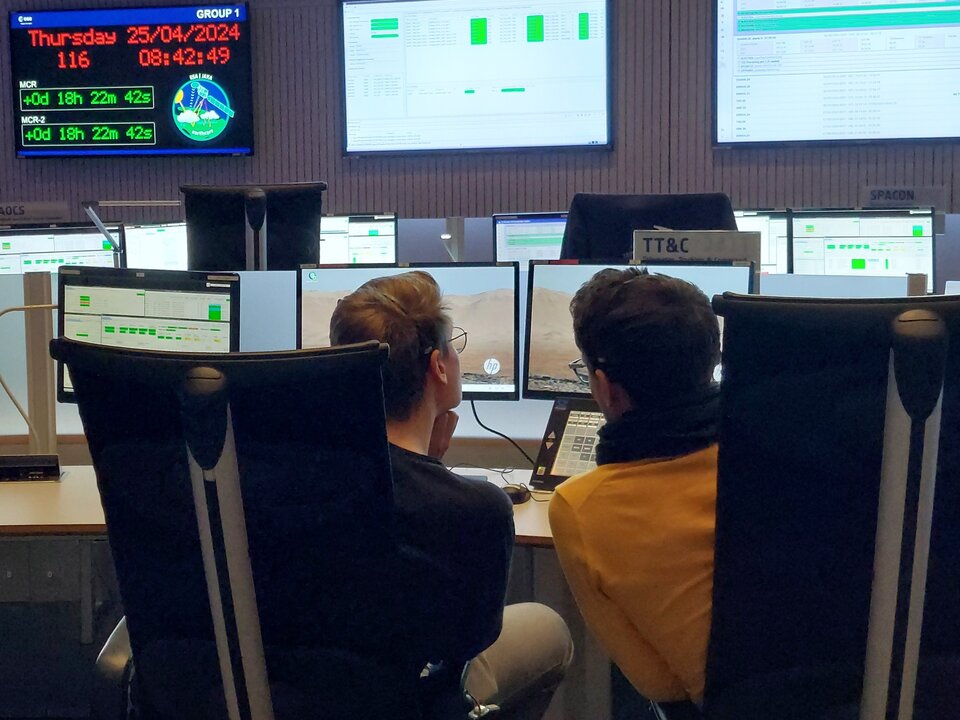
Fortunately, the object was not a bomb, and the EarthCARE team was able to return to mission control the next day. They have now entered the most demanding phase of their launch preparations as the Simulation Officers raise the stakes to the point of almost losing the spacecraft. After this climactic scenario, the simulations will return to more mild anomalies before the team carries out a trouble-free dress rehearsal on 17 May.
By that time, they will be fully prepared to guide EarthCARE through its first days in orbit and onwards as it begins its mission to improve our understanding of the role that clouds and aerosols play in Earth’s changing climate.
Follow @esaoperations and @esa_eo on X and esa_earth on Instagram for EarthCARE updates on and around launch day.
Experience the tension at ESA mission control in our short film: “The Burn”
Quelle: ESA
----
Update: 13.05.2024
.
Projekt "Earthcare"
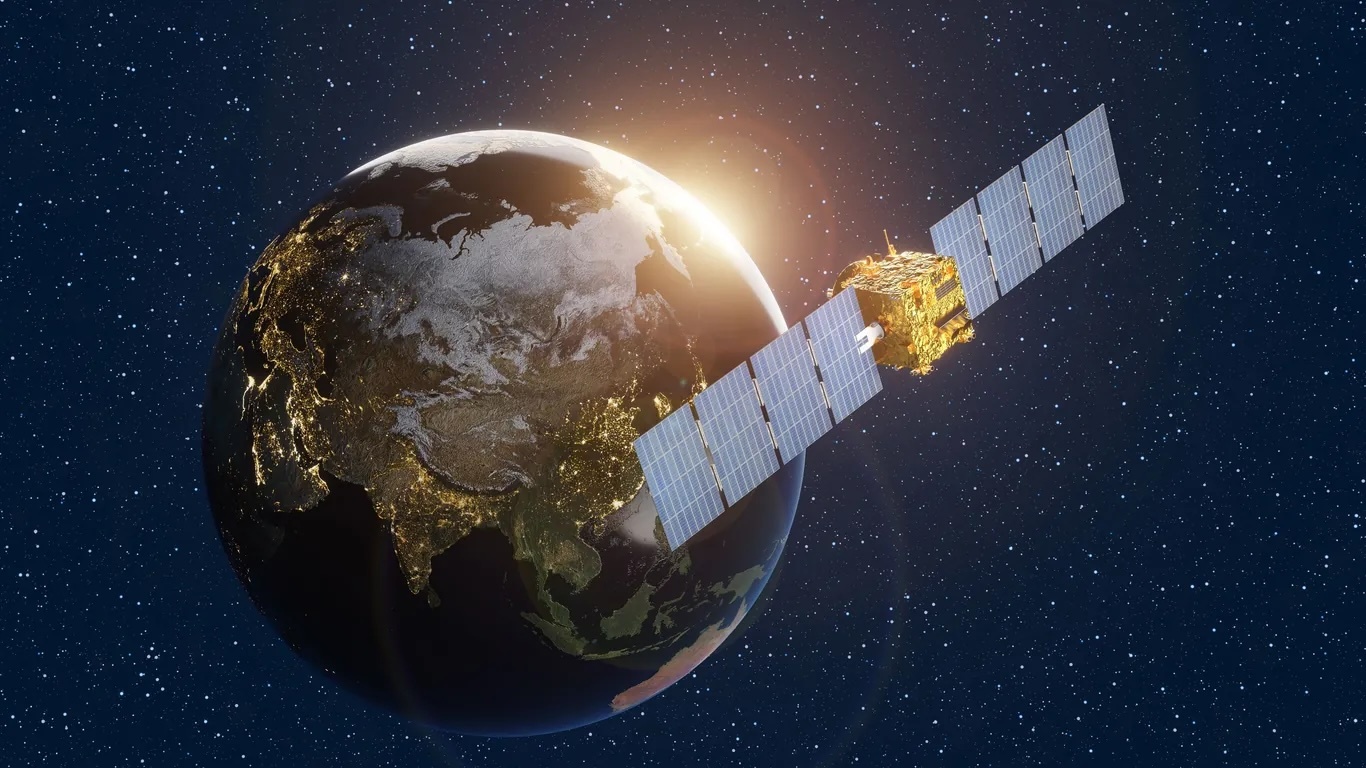
Ende Mai geht es los: Der Satellit "Earthcare" soll helfen, Klima- und Wettermodelle zu verbessern.
Die Europäische Raumfahrtagentur ESA bereitet sich auf den Start des neuen Erdbeobachtungssatelliten "Earthcare" vor (kurz für: Earth Cloud Aeorosol and Radiation Explorer). Der Start ist für Ende Mai geplant und soll helfen, das Wissen über die Erdatmosphäre zu vervollständigen und Klimamodelle und Wettervorhersagen zu verbessern.
Seit Wochen trainieren Spezialisten im Kontrollzentrum der ESA in Darmstadt intensiv für diese Mission. Bei dieser handelt es sich um eine von Europas und Japans aufwändigsten Erdbeobachtungsmissionen mit dem Ziel, ein 3D-Modell der gesamten Atmosphäre zu erstellen. Die Forscher hoffen, dadurch ein besseres Verständnis für Klima- und Wetterphänomene zu entwickeln.
Ziel: Ein 3D-Modell der gesamten Athmosphäre zu erstellen
Nicolaus Hanowski von der Esa-Direktion erklärt: "Das hat sonst keiner." Mit der "Earthcare"-Mission soll nämlich die Wechselwirkung zwischen Wolken, Aerosolen und Sonneneinstrahlung auf globaler Ebene untersucht werden. Hanowski betont: "Wir machen die Säule dreidimensional, indem wir die komplette Erdoberfläche untersuchen."
Dieser Satellit wird mit vier hochkomplexen Instrumenten ausgestattet sein, welche unter anderem Dichteprofile gewinnen, den Wassergehalt von Wolken bestimmen, die chemische Zusammensetzung messen und die Art der Moleküle erfassen können. Diese Daten sollen dann genutzt werden, um Wettervorhersagen zu optimieren.
Damit sollen Kathastrophen langfristig vorausgesagt werden
Hanowski ist jedoch vorsichtig bei Aussagen zu kurzfristigen Warnungen vor Unwetterereignissen. Auch wenn die neuen Daten dabei helfen sollen, Unwetter wie die tödliche Flutkatastrophe 2021 im Kreis Ahrweiler langfristig besser vorherzusagen, sagt er: "Kurzfristige Warnungen vor derartigen Ereignissen sind indes auch mit den neuen Daten nicht möglich." Es geht vielmehr darum, die Dynamik von Wolken und der Atmosphäre zu verstehen und damit langfristige Vorhersagen und Klimamodelle zu verbessern.
Der Leiter des Kontrollzentrums in Darmstadt, Simon Plum, bereitet sich mit seinen Teams intensiv auf den Start vor. Die größten Herausforderungen seien der Start selbst, die Ausrichtung der Solarpanele zur Sonne zur Energiegewinnung und das Herstellen der Kommunikation mit dem Orbiter. Sollte hier auch nur ein Aspekt schiefgehen, wird es am Starttag nicht heißen: "We have a mission."
Quelle: t-online.de


